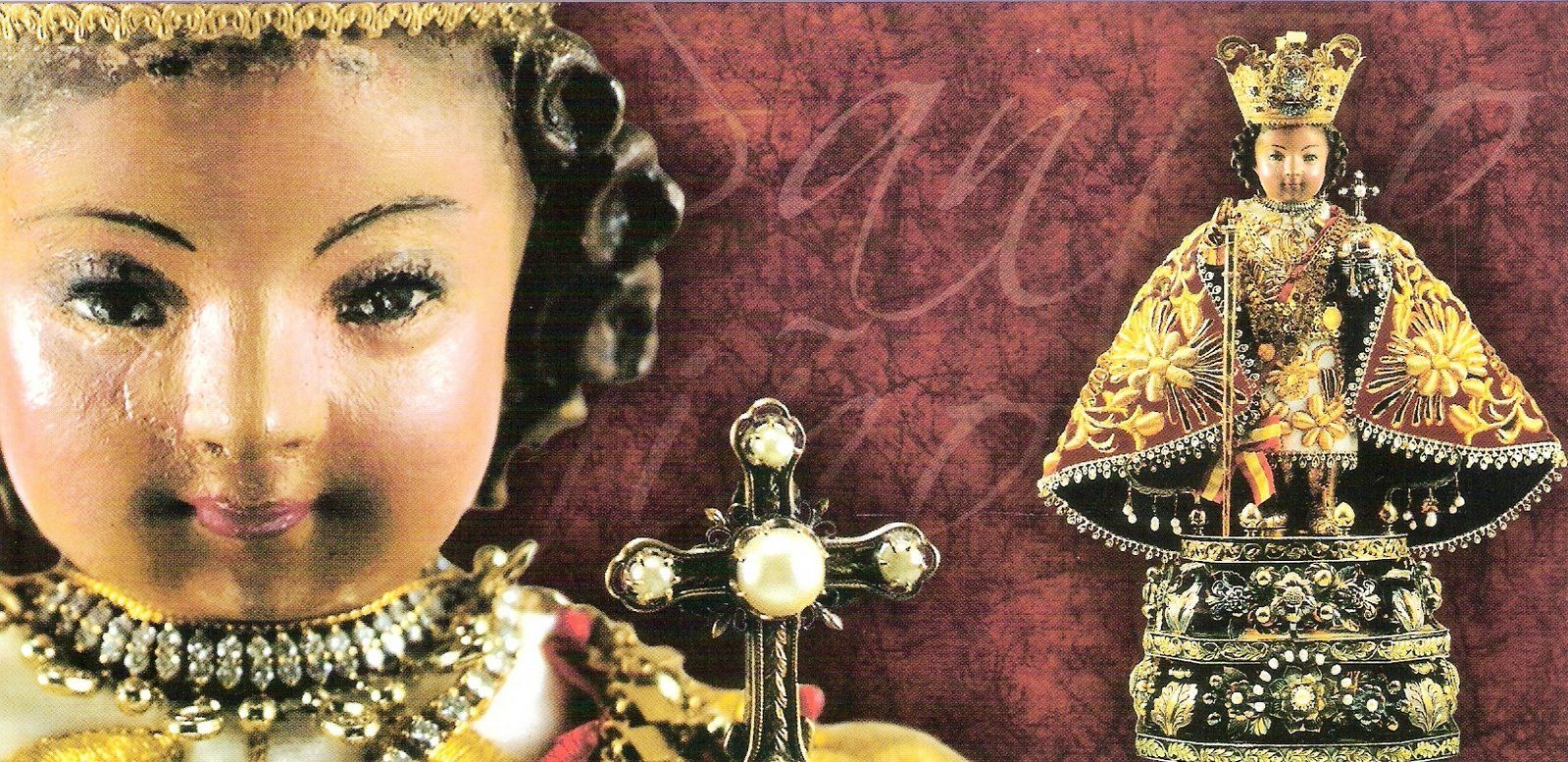
SANTO NIÑO DE CEBU HISTORY: 4 AMAZING FACTS WORTHWHILE TO KNOW.
1. The image of Santo Niño de Cebu was one of the gifts of Ferdinand Magellan to the ruler of Cebu and his chief consort for their Baptism and helped in the evangelization of the Philippines.
The Santo Niño de Cebú image was originally produced by Flemish artisans, according to a hagiography, based on a vision of Teresa of Avila a mystic of the 16th century.
On September 20, 1519, a fleet of five galleons commanded by Portuguese Navigator Ferdinand Magellan at the service of the king and queen of Spain set sailed from San Lucar de Barrameda to search for the Spice Islands. They did not find the spice island, instead they landed in Limasawa, a small island south of Leyte in the central part of the Philippines. Magellan took possession of the islands and named it after King Philip of Spain.
- In early 1521, the Portuguese explorer Ferdinand Magellan, in the service of Charles V of Spain, was on his voyage to find a westward route to spice islands.
- In April 7, 1521, he landed in Limasawa, Southern Leyte, and met local ruler named Raja Kulambu, who introduced him to the ruler of Cebu Island named Rajah Humabon and his chief consort, Hara Humamay.
- On April 14, 1521, Magellan presented them with three gifts: a cross, an image of the Blessed Virgin Mary and Santo Niño as a part of their baptism, and a strategic alliance for territorial conquest.
- As the host ruler adopted the Catholic faith, he took the Christian name of Carlos (after Charles V), while Humamay was christened Juana (after Joanna of Castile, Charles’ mother). As earlier authenticated entry in the Journal of Pigafetta, clerk in the Magellan expedition, explained the origin of Santo Nino: “On the day Queen Juana was baptized by Father Pedro Valderama, chaplain of that expedition, Pigaffeta himself presented her with the Image.”
- According to Pigafetta – Magellan’s companion and memoir writer, along with the ruler, about 500 males there, along with the Queen and 40 women were also converted by Father Valderrama. At the ceremony, for example, the Raja Kulambu of Limawasa also converted and was renamed as Don Juan, while his Muslim captain was renamed Don Cristobal.
- A few days after the baptism, Magellan undertook a war expedition on the behalf of the newly named Carlos, attacked Mactan Island, burning down hamlets who resisted. The residents led by Lapu Lapu defended Magellan’s attack with force, and Magellan died on 27 April 1521 in the Battle of Mactan, about three weeks after he had arrived in Philippines.
- After Magellan’s death, his Spanish colleagues left and this same expedition has also set the record as the first to circumnavigate the earth.
2. The image of Santo Niño of Cebu survived the destruction of the town during the 1565 Cebu bombardment carried out by the 2nd Spanish expedition.
The next Spanish expedition arrived on April 27, 1565, again to gain a foothold for a colony to trade spices, and this was led by Miguel López de Legazpi. He attempted a peaceful colonization, but these efforts were rejected.
- Because of Cebuanos’ suspicion that the Spaniards returned to avenge Magellan’s death, another battle broke out. Heavy artilleries and huge cannons forced the natives to flee to the mountain leaving behind their villages with 1500 homes burnt to the ground and possibly 500 mortalities.
- Amidst the ruins of the destruction, the Spanish mariner Juan Camus found the image of the Santo Niño in a pine box. According to the local legend, the survival of the statue was seen as a sign of miracle by the colonizers, and ever since it has been believed to have miraculous powers.
3. The image of Santo Niño of Cebu remained miraculously unscathed during the WWII bombing of the Church where it was venerated.
- During World War II, the whole city of Cebu was heavily bombarded. Major buildings including the Santo Niño Church were reduced to rubble but the image was found unscathed. It was one of the numerous miracles and powers attributed to the Holy Image.
4. The image of Santo Niño of Cebu is the oldest surviving Catholic relic in the Philippines.
The image of the Santo Niño is the oldest surviving Catholic relic in the Philippines, along with the Magellan cross.
- A church to house Santo Niño was built on the spot where the image was found by Juan Camus.
- The church was originally made out of bamboo and mangrove palm and claims to be the oldest parish in the Philippines. It was reconstructed later, and Pope Paul VI elevated it to the status of Minor Basilica on its 400th anniversary (Spanish: Basílica Menor del Santo Niño).
SOURCES: Wikipedia, santoniñodecebu.org, gimiliani.org
The Feast of Santo Niño of Cebu is celebrated every 3rd Sunday of January and is attended by millions of devotees throughout the days of the fiesta. Watch the AV below on the Feast of Santo Niño of Cebu





